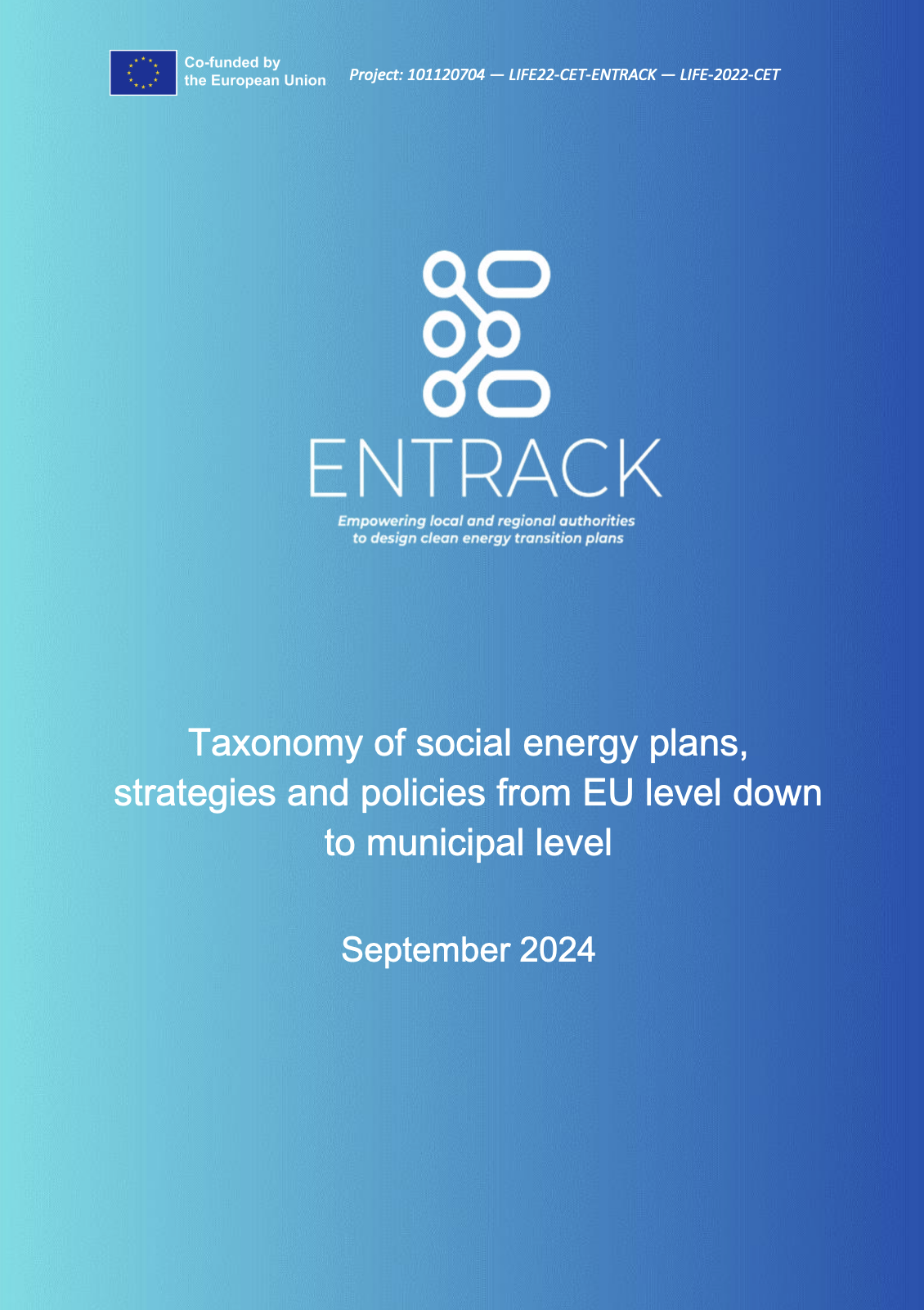
ENTRACK - Taxonomy of social energy plans, strategies and policies from EU level down to municipal level [2024]

The present document presents a comprehensive taxonomy and analysis of social energy policies from the European Union (EU) level down to the municipal level. As the EU continues to lead global efforts in addressing climate change and promoting sustainable energy, understanding social energy policies' multi-level governance and intricate interconnections is crucial for effective policy implementation and achieving social energy objectives.
This report aims to map the complex social energy policy context in the Southern Mediterranean countries of Portugal, Spain, Italy and Greece, as well as at the EU level. This categorisation exercise reveals the pivotal role of The Paris Agreement and the UN 2030 Sustainability Agenda in shaping the social energy policy context, where in each of the cases studied, the development of social energy policies can be linked to these two foundational international policies. This is noteworthy when considering criticisms of the value of international policy initiatives, demonstrating their seminal influence at the EU and Member State levels. The specific policy structure of each of the cases varied, where, in general, a top-down structure was observed, with limited evidence of local or regional policies influencing national or EU-level policies. This top-down structure reflects only the policies and specific cases included in our analysis and is, to some extent, indicative that international policies or laws will not necessarily refer to local policies, even if they are influenced by them. Nonetheless, the predominance of the top-down structure observed is an important consideration given that local and regional actors generally have closer proximity to citizens and aim to implement a “citizen-led” approach to the green transition in Europe. Policies falling specifically into the social energy policy domain tended to be higher-level policies. Thus, another critical step is to consider the integration of this sector into lower-level policy initiatives. The analysis also revealed the presence of different types of interrelations between different
policies, namely relationships between policies could be “Direct”, implying a cause/effect relationship or “Parallel” where policies had related scopes but were not the cause or the result of another policy. Identifying these distinct relationship types between different policies is a novel contribution of this report and represents an important area of future research. Based on these early findings, the results of this report suggest that a high proportion of parallel policies may suggest a comprehensive coverage of a policy issue but may result in duplication and inefficient resource allocation. Alternatively, a strong presence of Direct policies does not necessarily result in less duplication but suggests more intentional policy pathways with a clearly sequential policy structure. For all the case studies, the most frequently occurring policies were those in the environment and climate change category. This reflects the broad scope of this policy category, which was
identifiable at all spatial scales. With Southern Europe's regions particularly susceptible to climate change, sharing several common social vulnerabilities and significant renewable energy resources, these initial findings are a valuable contribution to ongoing policy discourse and developments in this area. Specifically, a first glimpse into the social energy policy domain is particularly important in the current energy crisis scenario and the unfolding of just and inclusive energy transitions.